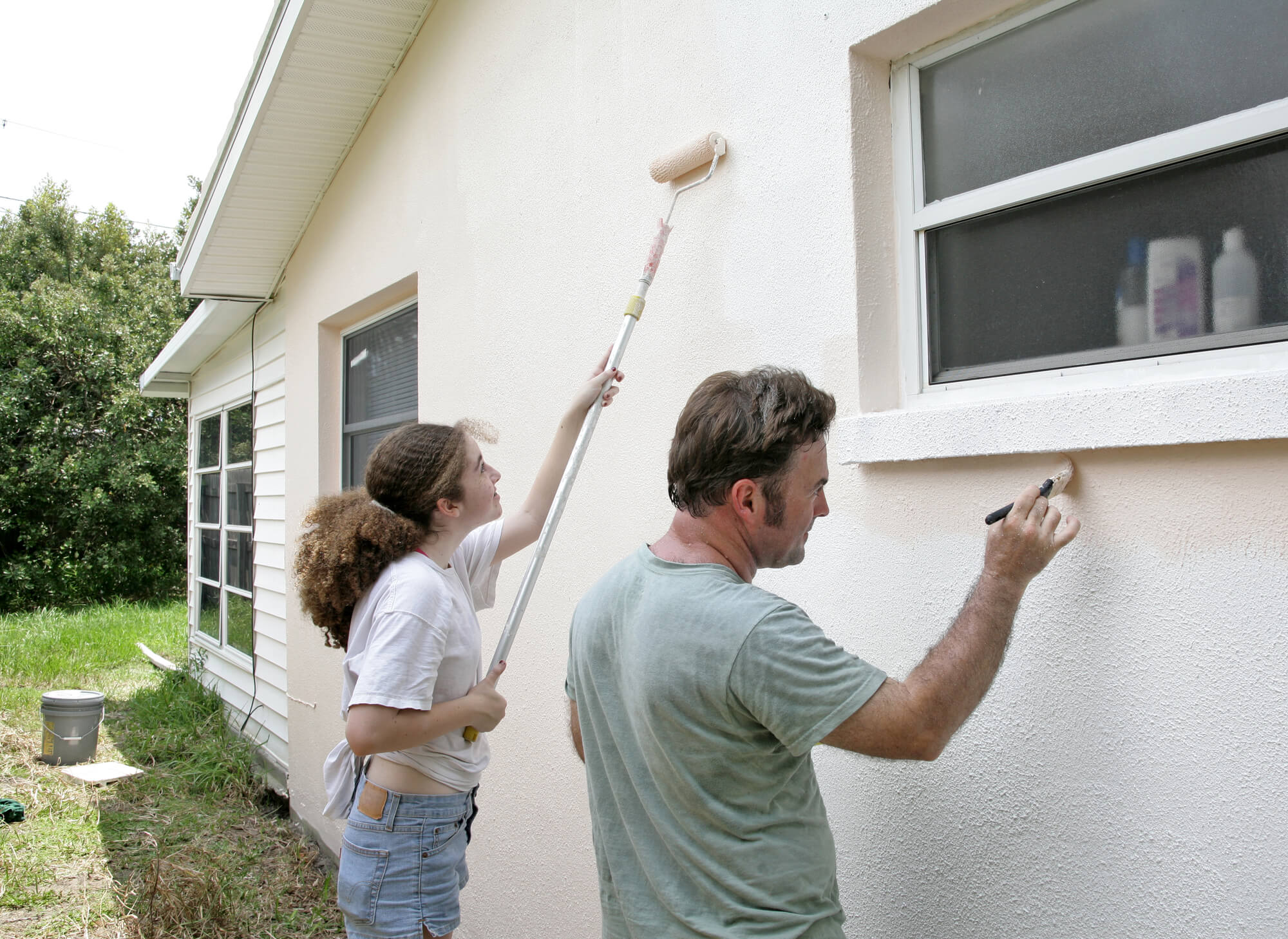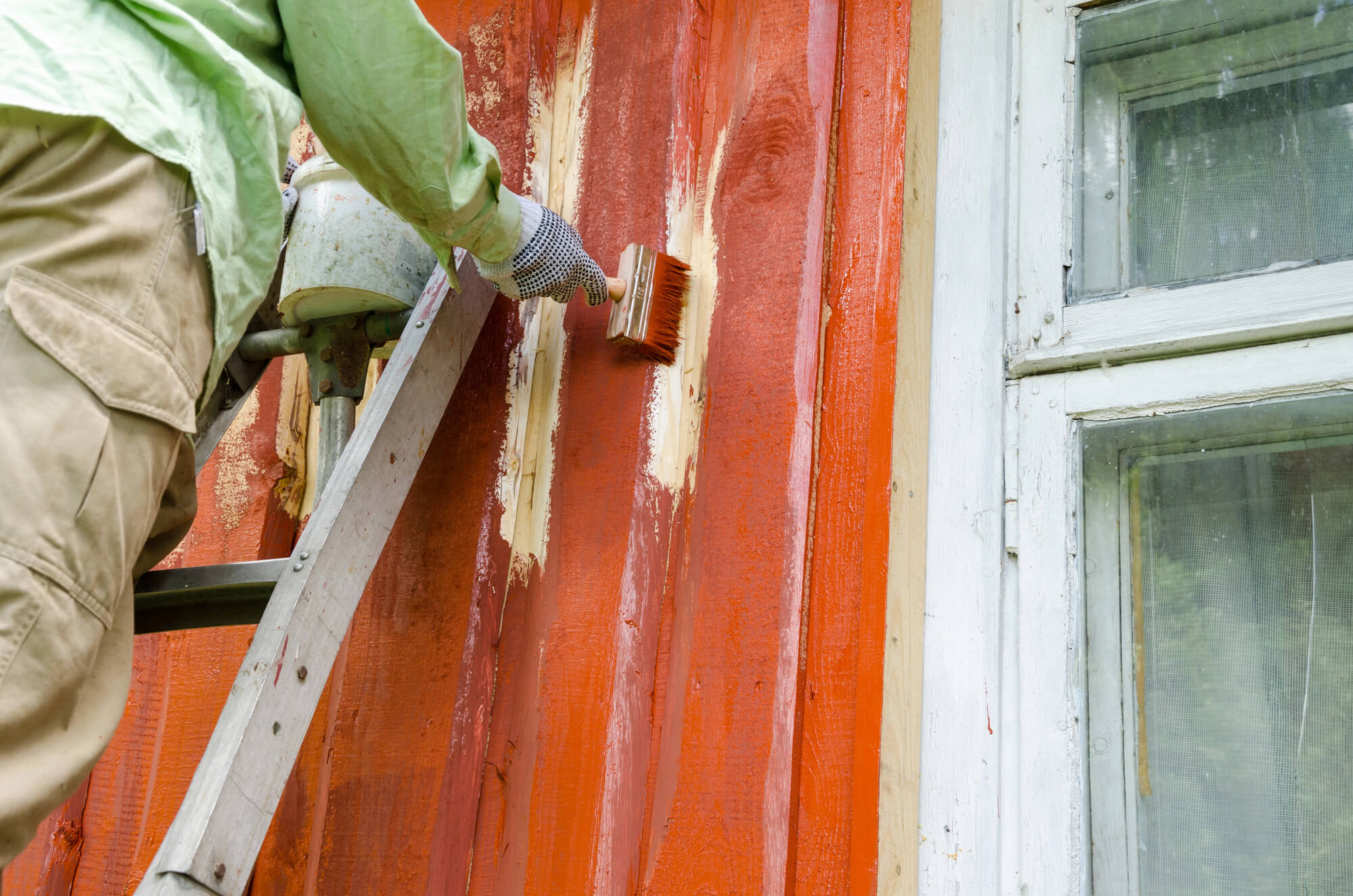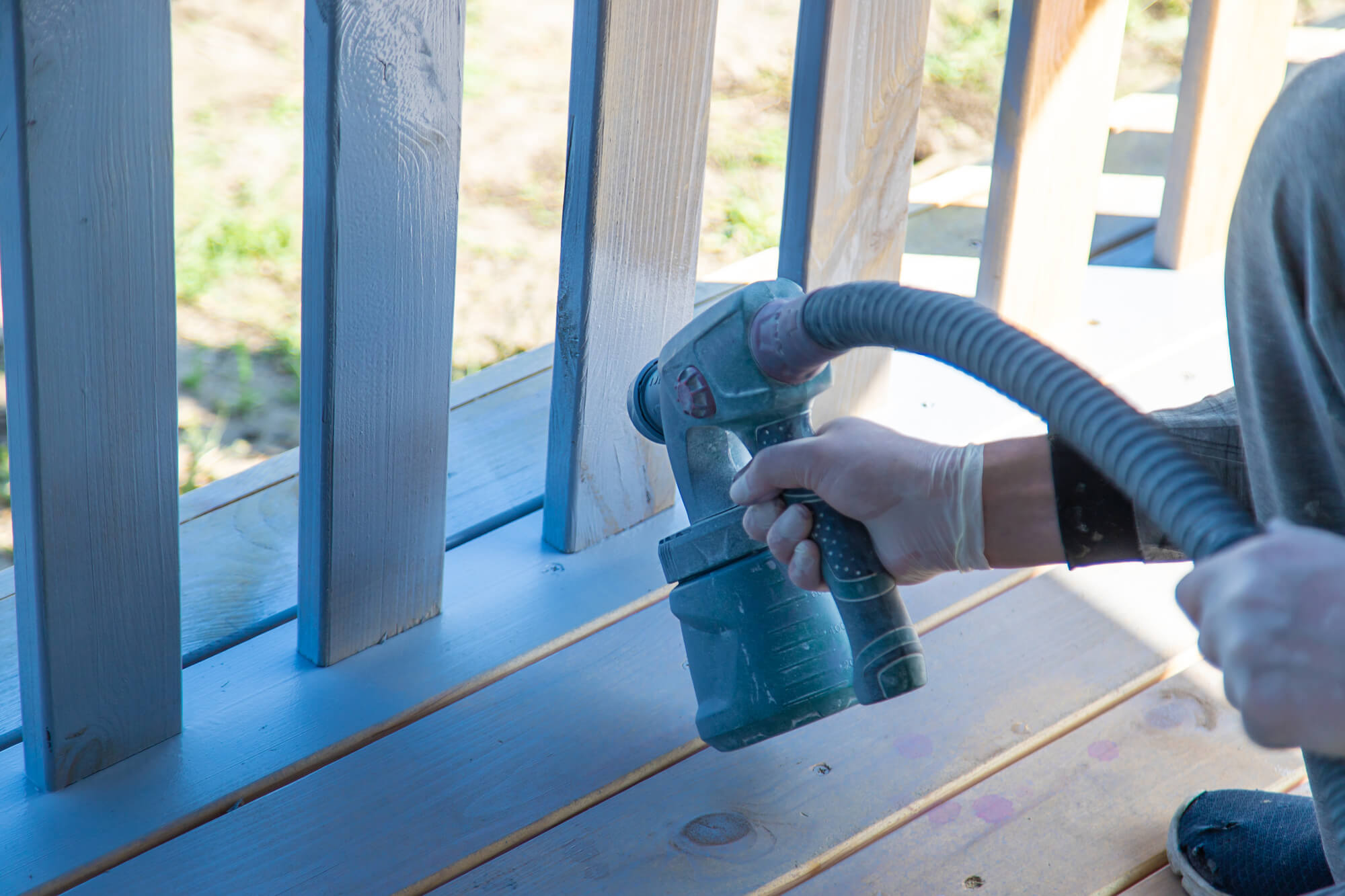
Talk to an Expert

Talk to an Expert
When it comes to home improvement projects, painting the exterior is often at the top of the list. A fresh coat of paint can not only enhance the curb appeal of your home but also protect it from the elements. However, the decision of whether to DIY or hire a professional can be daunting, as there are advantages and disadvantages to both approaches.
The exterior of a home serves as its first impression, providing a glimpse into the personality and care invested in the property. Beyond aesthetics, the exterior paint serves as a protective barrier against the elements, safeguarding the structure from harsh weather conditions, UV rays, and wear over time. Given the pivotal role of exterior paint, the decision to embark on a painting project becomes a critical aspect of homeownership.
As homeowners contemplate the prospect of refreshing their home’s exterior, a common dilemma arises: whether to undertake the painting project as a do-it-yourself (DIY) endeavor or enlist the services of a professional painter. This decision involves weighing the advantages and disadvantages of each approach to ensure a successful and lasting outcome.

Embarking on a DIY exterior painting project provides homeowners with a profound sense of accomplishment. Successfully transforming the look of their residence fosters a connection to the property and a tangible representation of their efforts. This emotional reward can enhance the overall satisfaction derived from the project.
DIY painters enjoy the flexibility of setting their timelines. This allows homeowners to work at their own pace, accommodating other responsibilities or unexpected interruptions without the constraints of a professional painter’s schedule.
Undertaking an exterior painting project requires a substantial time commitment. DIY painters may find themselves dedicating weekends or extended periods to complete the task, potentially leading to project fatigue and delays.
Despite the enthusiasm, DIY painters often lack the specialized knowledge and skills possessed by professional painters. This can result in challenges related to surface preparation, proper paint application, and long-term durability. Inexperienced painters may unknowingly compromise the longevity and effectiveness of the paint job.
The absence of professional expertise increases the likelihood of mistakes during the DIY painting process. These errors, ranging from uneven paint application to inadequate surface preparation, may necessitate additional time and resources for rework, diminishing the initial cost savings.

Their knowledge extends to proper surface preparation, paint selection, and application techniques, resulting in a finish that not only enhances the aesthetic appeal but also withstands the test of time.
Professional painters are adept at maximizing efficiency without compromising on quality. With a team of skilled individuals, they can complete the exterior painting project in a fraction of the time it might take a DIY enthusiast. This time efficiency is particularly advantageous for homeowners seeking a swift transformation without prolonged disruptions to their daily lives.
Professional painters have access to high-quality materials that may not be readily available to the average consumer. From premium paints to specialized primers and coatings, these materials contribute to a more durable and resilient finish. The use of professional-grade products ensures that the exterior paint job will maintain its vibrancy and protective qualities over an extended period.
The primary drawback of opting for professional painting services is the higher upfront cost. While the investment may yield superior results, it can be a deterrent for budget-conscious homeowners. However, it’s essential to consider the long-term value and durability of a professionally executed paint job, potentially mitigating the need for frequent repainting.
Hiring a professional means adhering to a predetermined schedule. While this ensures timely completion of the project, it can pose challenges for homeowners with specific time constraints or those who prefer a more flexible approach. Coordination with the professional painter’s timeline is crucial to avoid potential inconveniences.
Identifying a reliable and skilled professional painter requires thorough research and vetting. Homeowners must invest time in selecting a reputable contractor, considering factors such as customer reviews, past projects, and licensing. The process of finding a trustworthy professional can be time-consuming but it is crucial to ensuring a positive painting experience.
When deciding whether to embark on a do-it-yourself (DIY) project or hire a professional to paint your home’s exterior, several crucial factors should be taken into account. Each factor plays a pivotal role in determining the most suitable approach for your specific situation.

However, larger or more complex exteriors, featuring multiple stories, intricate architectural details, or challenging surfaces, may benefit from the expertise of a professional painter. Assessing the scope of the project helps in determining the level of skill and resources required.
Budgetary considerations often play a decisive role in the DIY vs. professional painting decision. DIY projects are typically more cost-effective upfront, as they eliminate labor costs. For homeowners with limited budgets, the prospect of saving money by investing time and effort into a DIY project may be appealing.
On the other hand, those with more flexible budgets may prioritize the long-term benefits of a professional paint job, including enhanced durability and a polished finish.
The availability of time is a crucial factor that can influence the choice between DIY and professional painting. DIY projects demand a significant time commitment, especially for larger exteriors or intricate detailing.
Homeowners with busy schedules or time constraints may find it challenging to dedicate the necessary hours for proper surface preparation and painting. In such cases, hiring a professional offers the advantage of time efficiency, ensuring a swift and proficient completion of the project.
Assessing one’s skill level and experience in painting is fundamental. DIY enthusiasts with prior painting experience, a good understanding of surface preparation, and the patience to learn and troubleshoot may confidently tackle an exterior painting project.
However, for those lacking the necessary expertise, hiring a professional ensures that the job is executed with precision, minimizing the risk of errors and ensuring a high-quality finish.
While embarking on a do-it-yourself (DIY) exterior painting project offers a sense of accomplishment and potential cost savings, success depends on meticulous planning and execution. Here are some valuable tips for DIY painters to ensure a smooth and professional-looking finish.
When opting for a professional painter to tackle your home’s exterior, a thoughtful and well-researched approach is crucial. The process involves careful consideration of various factors to ensure that the chosen professional aligns with your expectations and delivers a high-quality paint job.
At Big Easy Paintings, we are dedicated to providing our customers with exceptional results for their home exterior projects. With our team of skilled and experienced painters, we guarantee that you will be satisfied with the outcome.
Our attention to detail and commitment to using high-quality materials ensure that your home will look its best and be protected from the elements. Contact us today for your home exterior needs, and let us transform your house into a beautiful and inviting space.